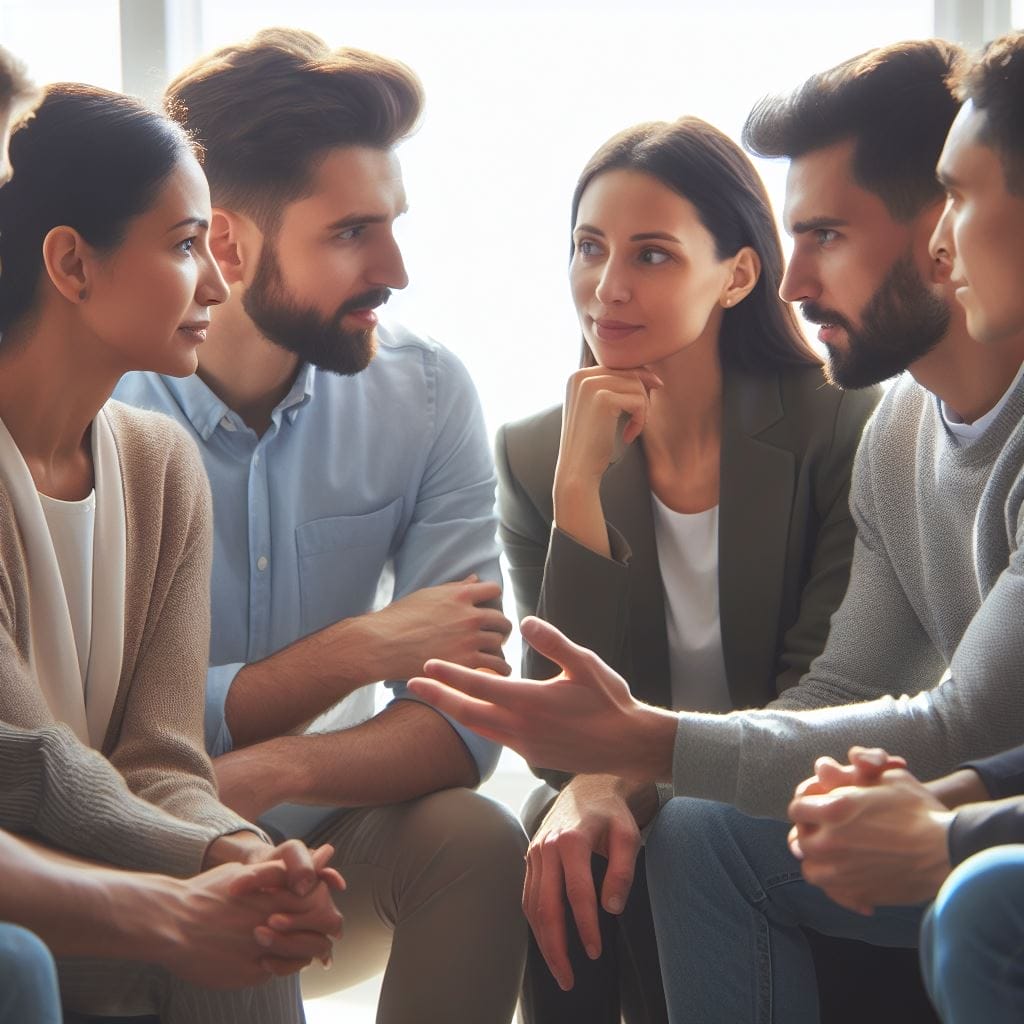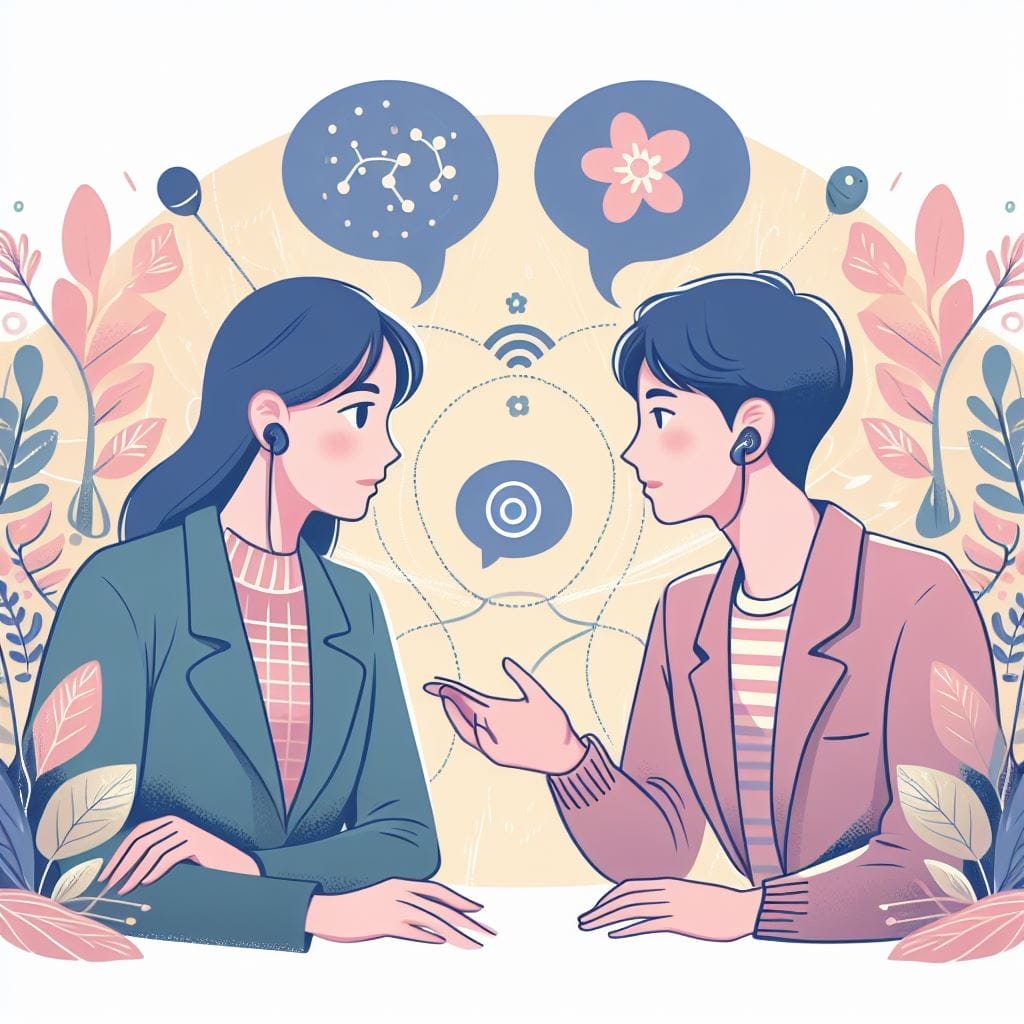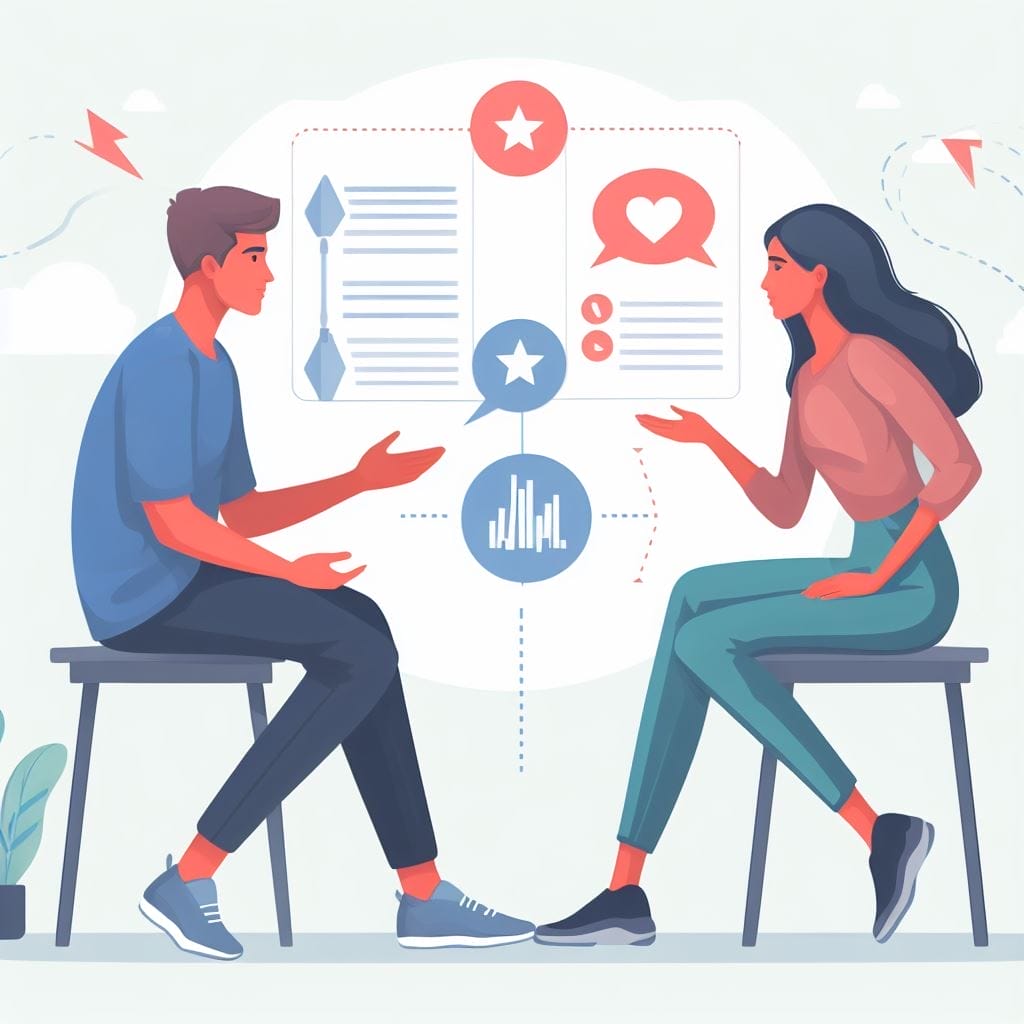Introduction
Active listening is when the person pays attention and helps everyone communicate well. Active listening is more than hearing words; it’s like a beautiful dance that decreases misunderstandings. But how does active listening work its magic to turn misunderstandings into clear understanding? So today in this guide you will learn ‘ How does active listening decrease misunderstandings?
Join me on a journey to explore active listening skills. The listener conducts an exchange of ideas and emotions. Let’s explore communication. We’ll look at paying attention, cues, and empathy’s power.
Join me in exploring the art of active listening, where misunderstandings can be resolved.
Key Takeaways
Well done on exploring active listening and how it helps reduce misunderstandings. As you reflect on the insights woven into the fabric of this journey, here are the key takeaways that await you:
- Listening is not passive. It’s a dynamic partnership that improves understanding.
- Enhance your comprehension by diving into the important components of active listening skills. This includes the art of paraphrasing and using body language effectively.
- By actively listening, you can see how considering different perspectives can transform understanding. Instead of assuming, seek clarity.
- Learn how empathy resolves misunderstandings, untangles emotions, and deepens connections between communicators.
- Learn the tools of active listening, like reflective listening and asking clarifying questions. These techniques help you communicate effectively.
- Experience real-life harmony in a case study. See how active listening leads to positive outcomes. It shows the importance of these skills in personal and professional realms.
As you learn these lessons, use them as signs to help you communicate better. May your future conversations be meaningful. Listen attentively and build stronger relationships.

The Role of Active Listening in Decreasing Misunderstandings
Active listening is important in communication. It helps people understand each other and avoid misunderstandings. In our fast-paced world, messages travel quickly. To have effective conversations, it’s important to consider different viewpoints and listen carefully. Active listening helps people understand each other better and promotes honest communication.
A. Creating a Supportive Communication Environment
1. Listening with Full Attention and Without Interruption
In our busy lives, simply giving someone our full attention can mean a lot. Picture a scenario where team members listen without interruption, making the speaker feel valued. It’s now not just about the words; it’s approximately the unstated, the body language that asserts, “I’m here, and I’m listening.”
2. Exhibiting Nonverbal Attentiveness Cues
Active listening involves more than just the ears; it’s a holistic experience. Silent tools like nodding, eye contact, and gestures can show agreement and understanding. Non-verbal cues help team members stay connected and engaged by creating trust and focus.
B. Enhancing Comprehension of the Message
1. Reflecting on the Speaker’s Words and Asking Clarifying Questions
To understand what someone is saying, it’s important to think about their words. When you ask questions to clarify, it shows you want to understand. Asking questions also helps avoid misunderstandings. It’s like a dance of words, where each step is deliberate and purposeful.
2. Paraphrasing and Summarizing to Ensure Understanding
When it comes to communicating well, being able to rephrase and summarize is like simplifying a complicated message. This skill shows that the speaker understands and prevents misunderstandings. It’s about boiling down complexity into clarity.
C. Encouraging Open and Honest Dialogue
1. Developing Rapport and Trust with Active Listening
Trust is the bedrock of any dating, be it non-public or expert. By actively listening, we no longer simply build acceptance as true but additionally enhance the rapport. Listening is more than a talent. It approaches committing to apprehend and appreciate the speaker’s attitude.
2. Permitting the Speaker to Completely Share Their Ideas and Feelings
In a global full of statistics, it’s rare to discover an area in which human beings can specify themselves. Active listening is ready to understand someone’s emotions, now not their words when they inform a story. It’s information that beneath each message lies a tapestry of mind and feelings.
Preventing Assumptions and Jumping to Conclusions
A. Avoiding Selective Perception
Actively Considering Multiple Perspectives and Avoiding Biases
Effective communication hinges on embracing diverse viewpoints. Active listening skills go beyond hearing. They involve immersing yourself in the speaker’s story. To avoid bias, consider different viewpoints and don’t see what you want.
Putting More Emphasis on the Speaker’s Intended Meaning Than Presumptions
Humans sometimes tend to conclude too quickly, mostly from presumptions. However, by honing in on the speaker’s meaning, we pave the manner for an extra profound understanding. If you listen carefully and notice non-verbal indicators, you don’t make assumptions.
B. Clarifying Misunderstandings Before They Escalate
Confirming Interpretations and Checking for Accuracy
Miscommunications often stem from interpretations gone awry. People can use active listening to understand the message and avoid confusion. This involves checking for accuracy and seeking clarification when needed.
Addressing Any Miscommunications or Conflicting Perceptions
In the realm of effective communication, addressing miscommunications is crucial. Active listening is more than hearing. It’s about having a conversation to understand different viewpoints. When we address misunderstandings directly, it sets the stage for better idea sharing.
The Secret to Clearing Up Misunderstandings: Empathy
Starting with a sequence of questions may be an effective manner to seize the reader’s attention. What happens when words fall short? How often do we misinterpret others? These questions prepare the reader to discover how empathy can transform people’s lives.
A. Understanding Emotions and Underlying Concerns
1. Reading between the Lines and Identifying Emotional Cues
Empathy begins with deciphering the unsaid. By reading carefully, one can understand the speaker’s hidden feelings and concerns.
2. Validating the Speaker’s Feelings and Concerns
Validation becomes the cornerstone of empathy. When we recognize how the speaker feels, it shows that we understand and value their emotions. This helps to create an atmosphere of trust and openness.
B. Responding with Empathy and Respect
1. Acknowledging the Speaker’s Perspective and Validating Their Experiences
Empathetic responses hinge on acknowledging diverse perspectives. When we validate the speaker’s experiences, it helps us feel connected and breaks down barriers that cause misunderstandings.
2. Providing Encouragement and Compassionate Reactions
Empathy requires active engagement; it is not a passive quality. Supportive responses demonstrate your interest in knowledge and your willingness to assist the person speaking.

Strategies for Active Listening to Reduce Misunderstandings
Introspective Audience: A Soul-Soothing Mirror
Reflective listening is like a chandelier in the grand ballroom of communication. It helps us understand the details. It’s not about hearing words. It’s also about understanding the speaker’s thoughts and feelings. You mirror their words, like a dancer. This shows you’re not a spectator, but also participating.
- Imagine yourself on a dance floor, copying your partner’s movements. When you’re talking, it’s like repeating what you heard to show you understand.
- Encouraging elaboration adds depth to your understanding, like a skilled dancer’s intricate moves. “Tell me more” becomes your graceful spin, unraveling the complexities of their thoughts.
Active Body Language: Dancing with Engagement
Communication involves more than just words. It’s like a dance of non-verbal cues, in which frame language is crucial.
- Imagine two dancers looking into each other’s eyes. This shows they are engaged and connected. When you talk to someone, looking them in the eye shows that you are fully listening.”
- A well-timed nod is like a dance move perfectly synchronized with the music. When you nod, the speaker knows you agree or understand, so they don’t feel alone.
- Your face can show interest and empathy, like a captivating dance with expressive gestures. Your face becomes the canvas, painting the emotions of the conversation.
Asking Clarifying Questions: Unveiling the Mystery
Communication, like a captivating plot, sometimes requires clarification to avoid misunderstandings.
- It’s like reading an exciting book; seeking more information reveals hidden depths. “Can you elaborate on that?” becomes your flashlight, illuminating the details obscured in the shadows.
- Assume, that you might trip over your own feet. Similarly, in communication, assumptions can lead to misunderstandings. Asking for specific examples or details ensures you dance on solid ground.
Active Listening Techniques Table
To communicate effectively, it’s crucial to listen actively and avoid confusion. Here is a table that shows different techniques for listening well and improving your communication.
| Technique | Description |
|---|---|
| 1. Reflective Listening | Repeating or paraphrasing the speaker’s words to confirm understanding. |
| 2. Clarification | Seeking additional information or details to ensure accurate interpretation. |
| 3. Non-Verbal Cues | Paying attention to body language, facial expressions, and gestures for deeper understanding. |
| 4. Empathetic Responses | Expressing understanding of the speaker’s emotions fosters a connection. |
| 5. Summarization | Briefly recapping the main points of the conversation to reinforce comprehension. |
| 6. Open-Ended Questions | Encouraging the speaker to provide more information and share their perspective. |
| 7. Paraphrasing | Expressing understanding of the speaker’s emotions, fosters a connection. |
| 8. Avoiding Interruptions | Allowing the speaker to express themselves fully before responding. |
| 9. Mindful Presence | Being fully present and engaged in the conversation, minimizing distractions. |
| 10. Feedback Loop | Providing feedback to the speaker to ensure alignment and mutual understanding. |
Case Study: Applying Practice-Based Active Listening Methods
Communication is a two-way street, and the significance of listening can’t be overstated. Active listening goes beyond hearing words. It helps us grasp deeper meanings. This skill goes beyond just the surface. It explores both verbal and non-verbal communication in detail.
II. The Dance of Understanding
Active Listening in Action:
In a recent face-to-face meeting, a team encountered a significant challenge. Divergent opinions and misunderstandings created an atmosphere of discord. This is where the magic of active listening entered the scene.
- The leader stressed active listening and urged everyone to practice it. To be part of the conversation, listen carefully, show interest, and ask questions to learn.
- As the team members listened carefully, they discovered the benefits of active listening. We noticed signs, spoken and unspoken, and had a shorter, more helpful talk. People viewed disagreement as a chance to solve problems, not as a problem itself.
III. Positive Outcomes
Improved Interpersonal Dynamics:
- Building strong relationships is easier when you have good listening skills. Team members felt heard, fostering a sense of respect and acknowledgment.
- Active listening contributed to increased productivity. The team stayed focused on important points. They avoided unnecessary detours. This helped them solve problems and make decisions effectively.
IV. Lessons Learned
Key Takeaways for Effective Listening:
- Attention Is Currency: In the sector of communique, interest is a valuable forex. To pay attention efficiently, it’s crucial to take note of what others are pronouncing.
- Mindful Listening: The two-way process of active listening requires practice. Listening isn’t just about hearing words. It’s also about paying attention, being brief, and giving helpful feedback.
A Symphony of Connection: My Journey with Active Listening
Active listening has connected and helped me understand others in my life. One such instance stands out, illuminating the transformative power of these skills.
A few years back, I had to handle a tough project at work. I had to manage different viewpoints and meet strict deadlines. Tensions were palpable, and misunderstandings seemed inevitable. Amidst all this chaos at work, I chose to use active listening skills.
As I sat down with my team, I embraced the role of the attentive listener. I listened to everyone and let them share their worries, thoughts, and annoyances. I listened to everyone and showed that I valued their opinions by using easier words. I was open to their ideas.
During a crucial time, a quiet team member offered a new viewpoint that altered everything. It was a nuanced insight that had the potential to unravel the knots of misunderstanding. I listened and discovered many new ideas and perspectives that were hidden.
The impact was palpable. As the project progressed, the atmosphere transformed. Misunderstandings gave way to collaborative problem-solving, and the project concluded with success. The situation seemed chaotic, but it became a harmonious team effort and shared success. This was all thanks to active listening.
Listening actively has a big effect on our work and everyday conversations. Listening is more than using your ears; it’s a bridge that connects hearts and minds. It creates understanding amidst life’s challenges.

FAQs: How does active listening decrease misunderstandings?
Why is it helpful to use active listening skills to improve communication and avoid misunderstandings?
Utilizing active listening skills is instrumental in improving communication and avoiding misunderstandings. Active listening helps us understand messages better by paying attention to both words and body language. To rate an article or discussion, individuals should focus on key points and show respect through both words and body language.
Active listening skills are improved by asking open-ended questions. This helps explore other skills and update conversation choices. During your next conversation, remember to listen and stay focused to be a good listener.
Do you want to know how interrupting a conversation affects listening and causes misunderstandings? Also, can you talk about ways to recap discussions for clarity?
When interruptions happen in a conversation, active listening can be affected. To avoid confusion, always pay attention when someone is speaking to you. When interruptions occur, verbal communication can be affected. To improve understanding, it’s important to ask open-ended questions and recap discussions.
This not only helps in maintaining a respectful conversation but also ensures that the key points are understood. When you talk to someone next, make sure to tell them if you want to change your choices or if you like it when they summarize things.
What do you think about active listening skills compared to other communication skills? How can you use active listening skills to rate and improve an article or discussion?
Active listening is better than other communication skills for evaluating articles and discussions. It’s wonderful that active listening involves asking open-ended questions and using other skills. To better understand people, pay attention to what they say and how they act.
It’s important to avoid losing focus and update your choices during a conversation. When you do this, you become a better listener and help make conversations better.
Can you explain how listening in daily conversations can help improve other social skills? Individuals can prevent misunderstandings by using and appreciating the practice of recap.
In daily conversations, using active listening skills can enhance other social skills. Active listening is a skill. It way of paying attention to what a person says, both with phrases and body language. To keep away from confusion, it is critical to research new capabilities.
For example, ask open-ended questions and update your choices. By improving their listening skills, people can create a better communication environment. Recap helps convey messages by making key points clear and easy to understand.
Conclusion: How does active listening decrease misunderstandings?
Now that we’re performing with lively listening, let’s take a moment to understand what we’ve found out.
- Active listening is like a choreographer for communication. It turns ordinary conversations into an understanding dance.
- We use active listening skills to build bridges and connect through mutual understanding.
- When we consider different viewpoints, we can see things without judgment or bias.
- Empathy’s transformative touch lies in active listening. It turns discord into resonance, validating emotions and building bridges of compassion.
- The toolbox of active listening helps us interact with others. It includes tools like reflective listening and asking clarifying questions. These tools make it easier to understand and communicate with each other.
As we end this journey, remember these lessons and use them to connect with others. Remember, you are the conductor of this symphony. You have the skills of active listening and the power to create harmony.
🎵 Join the Symphony: Embrace the art of active listening in your daily interactions. Challenge yourself to hear, understand, and connect. Let the symphony of understanding echo in your relationships, both personal and professional. Together, let’s create a world where communication is not heard but understood. 🎵

Sarah Andrews’ work on relationships is informed by a breadth of experience and a strong interest in human nature. Sarah, who holds a Psychology degree and has a good eye for nuances, delves into the complexity of communication and emotion, delivering insightful insights for readers seeking personal growth and emotional pleasure. Sarah hopes that her empathic approach and insightful suggestions will motivate readers to understand themselves and their relationships better.
